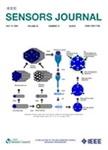版权所有:内蒙古大学图书馆 技术提供:维普资讯• 智图
内蒙古自治区呼和浩特市赛罕区大学西街235号 邮编: 010021

作者机构:Guangdong Univ Technol Sch Comp Sci & Technol Guangzhou 510006 Peoples R China Guangdong Polytech Normal Univ Sch Automat Guangzhou 510642 Peoples R China Guangdong Univ Petrochem Technol Sch Automat Maoming 525000 Peoples R China
出 版 物:《IEEE SENSORS JOURNAL》 (IEEE Sensors J.)
年 卷 期:2024年第24卷第3期
页 面:3084-3097页
核心收录:
学科分类:0808[工学-电气工程] 08[工学] 0804[工学-仪器科学与技术] 0702[理学-物理学]
基 金:Natural Science Foundation of China
主 题:Compounds Fault diagnosis Feature extraction Entropy Sensors Standards Signal processing algorithms Broad learning system (BLS) fault diagnosis feature entropy machine learning mode decomposition
摘 要:Rotating machinery plays a pivotal role in petrochemical units. However, compound and single faults frequently occur in rotating machinery due to the complexity of operating environments and the coupling of faults. This article presents a new compound fault diagnosis method to address the problem of poor diagnosis effect caused by mutual interference between multiple fault responses. First, the observable signals are decomposed via complete ensemble empirical mode decomposition with adaptive noise (CEEMDAN). Wavelet threshold filtering and reconstruction (FR) of the intrinsic mode function (IMF) are then utilized to construct a feature matrix consisting of multimodal feature entropy (MMFE). Finally, a mutual cooperation broad learning system (MC-BLS) model is developed to identify compound faults rapidly. The proposed theoretical model is validated using compound fault datasets obtained from the Key Laboratory of Guangdong University of Petrochemical Technology (PKL-data) and single fault datasets obtained from the Bearing Data Center of Case Western Reserve University (CWRU-data). Experimental evaluations conducted on these datasets demonstrate accuracy rates above 96% for both the compound fault dataset and the multiple single fault datasets. These results confirm the excellent performance of the proposed method recognizing both single and compound faults.